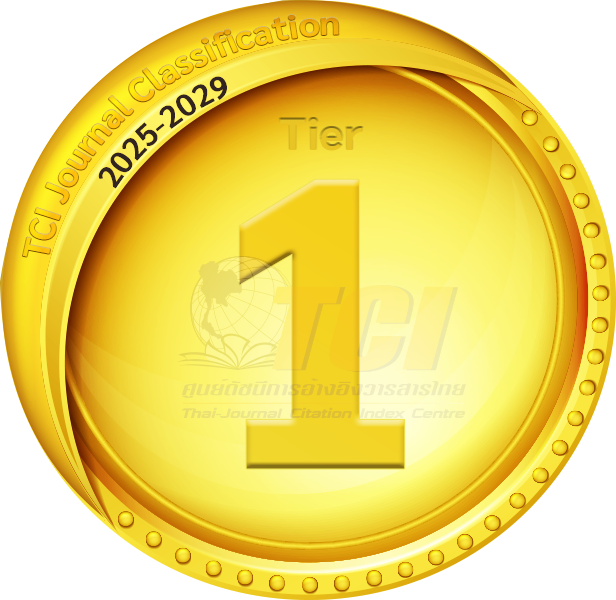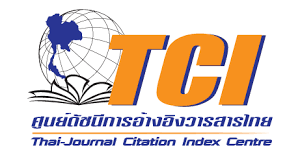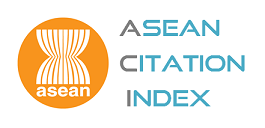The Use of Social Media among Thai youths for Political Communication
- Khanittha Jitsaeng, Department of Information Science, Faculty of Humanities and Social Sciences, Khon Kaen University, Khon Kaen, Thailand, jkhani@kku.ac.th
Abstract
Political communication is one of the most important processes in Thailand’s political system, as well as other democratic societies, as the success of its democratic governance depends on the connection between the people and the state through their public space. Consequently, social media has the potential to enhance Thai youths’ access to political information, facilitate wider-ranging political discussions, and foster political mobilization through its spaces. This research, therefore, aimed at studying the use of social media for political communication among Thai youths in today’s digital society. Four hundred samples were collected through multi-stage sampling from undergraduate students studying at higher education institutions in Thailand. A questionnaire was used as a research tool for gathering data, in which the content validity of the questionnaire was examined. Cronbach's alpha was also applied in a pre-test stage to measure the reliability of the research instrument. The alpha coefficient for all items was 0.92. The results found that more than half of the responding youths demonstrated a high use of Facebook and Twitter (58.4% and 52.7%, respectively), yet a low use of YouTube for political communication (47.5%). More than 90.0% of the Thai students followed political news from news feeds on Facebook media pages and online TV programs and newspapers; where more than 80.0 percent followed political news from interesting news stations/news media outlets via Twitter. In political discussions, roughly 70.0 percent of the youths discussed political issues via Messenger, and 63.0 percent of youths exchanged ideas with like-minded and dissimilar political figures via Twitter. In terms of political mobilization, nearly 70 percent wrote/expressed their support or opposition to political activities via Facebook, followed by Twitter (67.5%) and YouTube (38.7%).
Keywords: social media, political communication, youths
DOI: 10.14456/jcsh.2023.1
References
Abd Kadir, S., Lokman, A. M., Hamidi, S. R., & Mohamed, S. (2019). Influence of Political Agenda Videos Posted on YouTube Based on Social Reality Issues. International Journal of Recent Technology and Engineering, 7(6S2), 264-272.
Ahmad, T., Alvi, A., & Ittefaq, M. (2019). The use of social media on political participation among university students: an analysis of survey results from rural Pakistan. SAGE Open, 9(3), 1-9. https://doi.org/10.1177/2158244019864484
Ahmed, R. I. (2015). Role of social media in political mobilization among students. Retrieved from https://www.researchgate.net/publication/272345897_role_of_social_media_in_political_mobilization_among_students
Alami, A., Adnan, H. M., & Kotamjani, S. S. (2019). Examining the impact of using social networks on political knowledge and political attitude by Iranian university students. Journal Komunikasi. Malaysian Journal of Communication, 35(3), 125–140. https://doi.org/10.17576/JKMJC-2019-3503-08
Anouar, L. M. (2014). Online political participation: Fractures and inequality between the citizens. Procedia - Social and Behavioral Sciences, 163, 257-263. https://doi.org/10.1016/j.sbspro.2014.12.314
Bergstrom, A., & Belfrage, M. J. (2018). News in social media: Incidental consumption and the role of opinion leaders. Digital Journalism, 6(5), 583-598. https://doi.org/10.1080/21670811.2018.1423625
Breindl, Y. (2010). Critique of the democratic potentials of the internet: A review of current theory and practice. tripleC: Communication, Capitalism & Critique. Open Access Journal for a Global Sustainable Information Society, 8(1), 43-59. https://doi.org/10.31269/triplec.v8i1.159
Griffin, E. (2009). A first look at communication (7th ed). Boston, UK: McGraw-Hill.
Hoffman, L. H. (2012). Participation or communication? An explication of political activity in the Internet age. Journal of Information Technology & Politics, 9(3), 217-233. https://doi.org/10.1080/19331681.2011.650929
Hogan, B & Quan-Haase, A. (2010). Persistence and change in social media: A framework of social
Holmes, J. W., & McNeal, R. S. (2018). Social media use and political mobilization. International Journal of Public Administration in the Digital Age (IJPADA), 5(4), 50-60. https://doi.org/10.4018/IJPADA.2018100104
Intyaswati, D., Maryani, E., Sugiana, D., & Venus, A. (2021). Social Media as an Information Source of Political Learning in Online Education. SAGE Open, 11(2), 1-8. https://doi.org/10.1177/21582440211023181
Jiang, L. (2016). The effects of the internet on online and offline political participation among citizens in Australia. In the 66th Annual International Conference of British Political Science Association, Brighton, UK.
Kesici, A. (2018). Do social students use social media more often?. Turkish Online Journal of Distance Education, 20(2), 121–133. https://doi.org/10.17718/tojde.557855
McAllister, I. (2015). Internet use, political knowledge and political participation among young voters in Australia. Åbo Akademi University, Turku, Finland.
National Statistical Office. (2021). Summary of key results of the 2020 household information and communication technology survey. Retrieved September, 22, 2022, from http://www.nso.go.th/sites/2014/DocLib13/%E0%B8%94%E0%B9%89%E0%B8%B2%E0%B8%99ICT/%E0%B9%80%E0%B8%97%E0%B8%84%E0%B9%82%E0%B8%99%E0%B9%82%E0%B8%A5%E0%B8%A2%E0%B8%B5%E0%B9%83%E0%B8%99%E0%B8%84%E0%B8%A3%E0%B8%B1%E0%B8%A7%E0%B9%80%E0%B8%A3%E0%B8%B7%E0%B8%AD%E0%B8%99/2563/Pocketbook63.pdf
Office of the National Economic and Social Development Board. (2005). Interesting information of Thailand in 2005. Retrieved August 5, 2022, from https://www.nesdc.go.th/ewt_w3c/ewt_dl_link.php?nid=2915
Office of the Permanent Secretary, Ministry of Higher Education, Science, Research and Innovation. (2020). Student Information. Retrieved August 5, 2022, from http://www.info.mhesi.go.th/newinfo/homestat_std.php
Papagiannidis, S., & Manika, D. (2016). Political participation and engagement via different online and offline channels. International Journal of E-Business Research, 12(4), 1-22. https://doi.org/10.4018/IJEBR.2016100101
Park, C. S. (2017). Do social media facilitate political learning? Social media use for news, reasoning, and political knowledge. The Journal of Social Media in Society, 6(2), 206–238.
practice. Bulletin of Science, Technology and Society, 30(5), 309-315. https://doi.org/10.1177/0270467610380012
Quinlan, S., Gummer, T., Roßmann, J., & Wolf, C. (2018). ‘Show me the money and the party!’–variation in Facebook and Twitter adoption by politicians. Information, communication & society, 21(8), 1031-1049. https://doi.org/10.1080/1369118X.2017.1301521
Ricke, L. D. (2014). The impact of YouTube on U.S. politics. Lanham, US: Lexington Books.
Swart, J. (2021). Tactics of news literacy: How young people access, evaluate and engage with news on social media. New Media & Society, 23(3), 505-512. https://doi.org/10.1177/14614448211011447
Van Aelst, P., Strömbäck, J., Aalberg, T., Esser, F., De Vreese, C., Matthes, J., ... & Stanyer, J. (2017). Political communication in a high-choice media environment: a challenge for democracy?. Annals of the International Communication Association, 41(1), 3-27. https://doi.org/10.1080/23808985.2017.1288551
Wongchaowpreecha, K., & Tangprasert, S. (2019). Relationship between political communication and political participation of people eligible to vote in Nakhon Ratchasima Province. Journal of RMUTI, Humanities and Social Sciences edition, 6(2), 63-75.
Yamane, T. (1973). An introductory analysis. (3rd Ed.). New York, US: Harper and Row.

Indexed in


Search